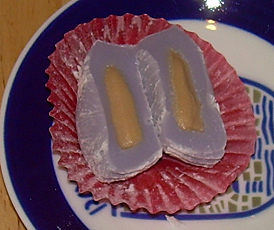

Make sure you defrost the puree to room temperature before reusing.

You may also choose to freeze the blend which would keep it good for 1 to 2 months. Once prepared, you can store the paste in a sealed container in the fridge for 1 to 2 weeks. Hence, do give it a try and decide on your preference! How long can you store taro paste?

The absence of coconut milk will change its flavour slightly. In the case that you do not have any coconut milk at hand, you may also replace it with whipped cream, butter and condensed milk. This depends on how creamy you would your paste to be. This would add a pandan aroma to the overall flavour of the taro paste.Īlthough the above recipe uses vegetable oil, you may choose to replace the oil portion with more coconut milk instead. If you would like, you may choose to even add some pandan to the ground root during the steaming process. You can then immediately mash the ground root in the rice cooker. Using a rice cooker with a steamer function is a good trick to easily steam the plant. In some cases where it is difficult to mash the starchy root plant into a smooth paste, use a blender to further smoothen the paste. Tried this recipe? Follow us for more delicious recipes! Variations to the recipe The filling can be used for many different treats such as taro balls, taro mochi, and more. The method described in the following recipe can be used for other types of fillings too such as chestnut, yams, or lotus. The process of making the paste is simple to learn and can be done at home fairly quickly! Additional ingredients or colouring may have been added if the purple colour is very strong.

Though this starchy plant when cooked has a purple colour, the natural hue is very light and not too vivid. We would like to highlight that if you see the paste used having a very vibrant purple colour, it may not be entirely true. These are suitable to add to cakes as frosting! By mixing the paste with butter and cream respectively, taro buttercream and whipped cream can be formed. Western cuisine has also embraced the paste of this starchy plant as a component of their dessert and snacks. the Japanese have devised taro as a filling in their supple rice cake dessert, the mochi. Shaobing with Taro filling | Image from Instagram An example is the taro paste bun or the taro mooncake which can be found in many bakeries in China. The sweet filling is used as a key element in many Chinese snacks such as the mantou, nian gao and shaobing.Ī lot of Asian bakeries use the paste as a prime flavour in their pastries. As a recent popular development, we observe that taro has become a popular bubble tea flavour in countries with a boba milk tea-drinking culture. Therefore, it makes using this plant in cuisine even more attractive due to its additional aesthetic value.īecause of the above reasons, the delicious root vegetable has grown to become a key ingredient to a diverse range of dishes globally. In addition, the taste of the corm also has a nutty tang which makes it a favourite ingredient by cooks.ĭue to the phenolic pigments abundant in the root's corms, they give out a delightful light purple colour. When cooked, it released a mild sweetness and has a potato-like texture. Though the leaves of the plant are also edible, the corm is more widely used in cooking.


 0 kommentar(er)
0 kommentar(er)
